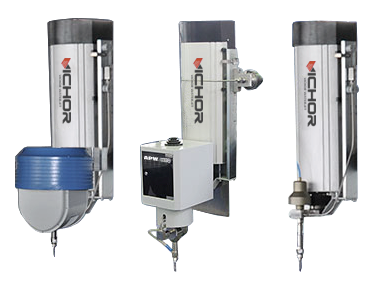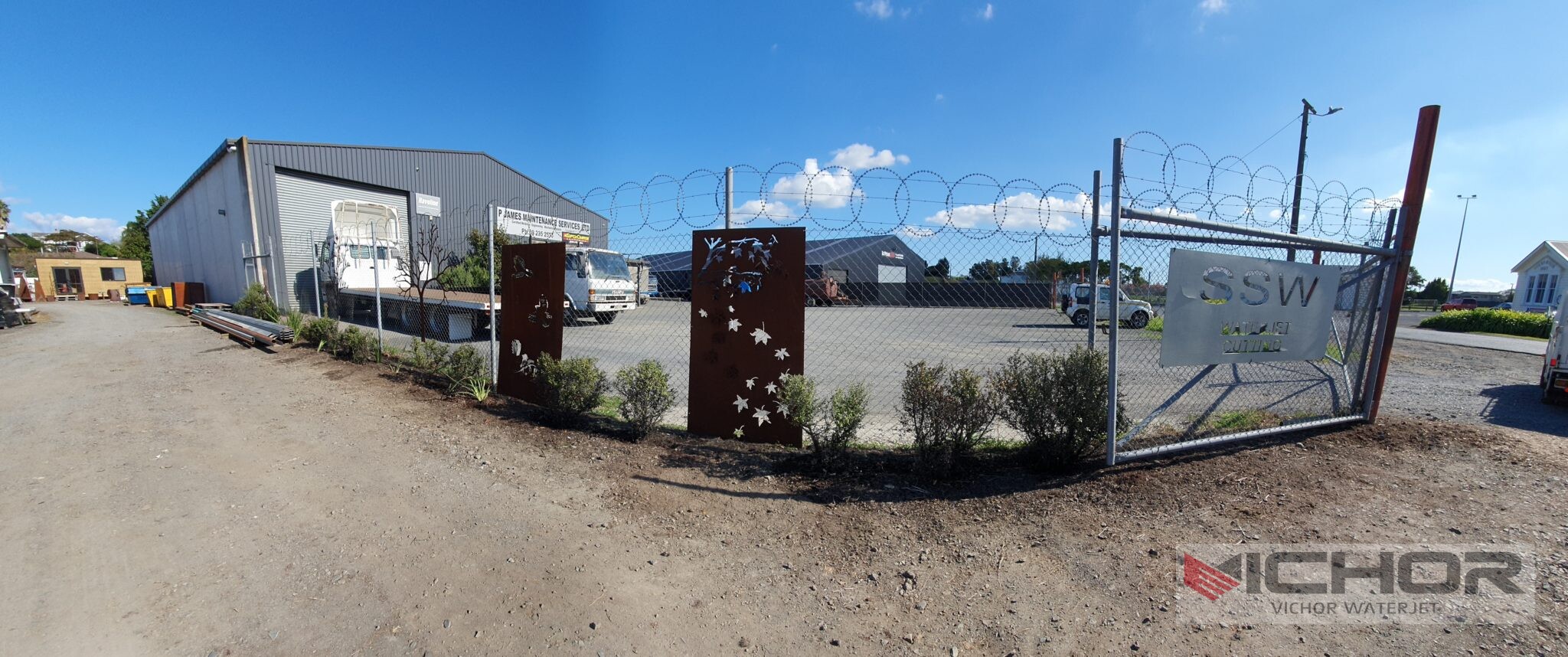
Water Cutting Head: The Precision Powerhouse Behind Modern Waterjet Cutting
In the world of industrial cutting, few technologies offer the versatility, precision, and cold-cutting advantages of waterjet systems. At the absolute heart of this remarkable technology lies a critical component: the water cutting head. Often referred to as the cutting head, abrasivejet head, or simply the nozzle assembly, this sophisticated device is where the raw power of ultra-high-pressure water is transformed into a cutting tool capable of slicing through virtually any material. Understanding the water cutting head is fundamental to appreciating the capabilities and operation of waterjet machines. This article delves deep into five crucial aspects of this vital component.
1. The Core Function: Generating the Cutting Stream
The primary and most fundamental role of the water cutting head is to create and focus the high-velocity cutting stream. This process involves several key stages happening within the head assembly:
Intensification & Acceleration: Ultra-high-pressure water (typically 30,000 to 90,000+ PSI) enters the head. The first critical component it encounters is the orifice (or jewel nozzle). Made from ultra-hard materials like synthetic sapphire, ruby, or diamond, this tiny opening (usually 0.004″ to 0.016″ in diameter) converts the high pressure into an incredibly fast, coherent water stream traveling near supersonic speeds (Mach 2-3).
Abrasive Introduction (For Abrasive Waterjet – AWJ): In pure water cutting (for soft materials), the stream exits the head directly. However, for cutting metals, stone, composites, and other hard substances, abrasive garnet is introduced. The water cutting head houses the abrasive inlet and mixing chamber. Here, the focused water stream creates a powerful vacuum (Venturi effect) that sucks in precisely metered abrasive particles. The turbulent mixing chamber accelerates and mixes the abrasive with the water stream.
Focusing the Jet: The final critical element is the focusing tube (also called the mixing tube or nozzle). This long, narrow tube (typically made of very hard carbide or diamond composites, with diameters like 0.030″, 0.040″, etc.) is precisely aligned with the orifice. Its function is to collimate the turbulent mixture of water and abrasive exiting the mixing chamber into a coherent, high-energy cutting jet. This focusing dramatically increases the jet’s cutting power, consistency, and kerf quality.
The efficiency and precision of this entire process within the water cutting head directly determine the cutting speed, edge quality, and kerf width achievable.
2. Anatomy of a Water Cutting Head: Key Components and Materials
A modern water cutting head is a marvel of precision engineering, integrating several critical components, each demanding specific material properties for longevity and performance:
Orifice (Jewel Nozzle): As mentioned, made from sapphire, ruby, or diamond. Sapphire offers a good balance of cost and life (50-100 hours typically). Diamond orifices are significantly more expensive but offer vastly extended lifespans (500-1000+ hours) and superior hole geometry consistency, crucial for high-precision cutting. The orifice is the first major wear component.
Abrasive Inlet Tube/Assembly: Provides the pathway for abrasive garnet to enter the mixing chamber. Designed to resist abrasion and ensure consistent flow.
Mixing Chamber: The cavity where high-pressure water and abrasive meet. Engineered to maximize turbulence and energy transfer. Materials must withstand extreme abrasion; tungsten carbide is common.
Focusing Tube (Mixing Tube/Nozzle): The single most critical wear component in abrasive waterjet cutting. Subjected to intense abrasive erosion. Made from ultra-hard materials:
Tungsten Carbide: Most common, offering a balance of performance and cost. Life varies greatly (10-50 hours) depending on pressure, abrasive, and material cut.
Composite Diamond: Offers significantly longer life (100-300+ hours) and superior hole stability, maintaining kerf consistency longer. Higher initial cost but often more economical for high-volume production.
Boron Carbide: Less common, very hard but brittle.
Head Body/Housing: Encases the components, provides mounting points, and ensures precise alignment. Typically made from hardened stainless steel or other robust alloys to withstand pressure and environmental factors.
Seals and O-Rings: Critical for maintaining ultra-high pressure integrity within the assembly. Made from specialized polymers resistant to high pressure and wear.
Sensing & Monitoring Ports (Advanced Heads): May include ports for monitoring water pressure, vacuum levels (indicative of orifice wear), or even integrated cameras for process monitoring.
The precise alignment of the orifice, mixing chamber, and focusing tube is paramount. Any misalignment drastically reduces cutting efficiency and jet coherence.
3. Material Versatility: Enabling Cold Cutting Across Industries
The water cutting head is the key enabler behind the waterjet’s legendary material versatility. Unlike thermal processes (laser, plasma, oxy-fuel), the water cutting head delivers a purely mechanical, cold-cutting action. This means:
No Heat-Affected Zone (HAZ): The cold cutting process prevents the metallurgical changes, hardening, or warping caused by heat. This is critical for heat-sensitive materials like tempered glass, heat-treated metals, composites (which can delaminate), and exotic alloys.
Cutting Virtually Anything: From soft rubber, foam, and food products (using pure water) to the hardest materials known:
Metals: Steel (mild, tool, stainless), aluminum, titanium, brass, copper, Inconel.
Stone & Tile: Granite, marble, slate, porcelain, ceramic.
Composites: Carbon fiber, fiberglass, Kevlar.
Glass: Tempered, laminated, bulletproof.
Plastics & Polymers: Acrylic, PVC, Delrin, UHMWPE.
Exotic Materials: Titanium, tungsten carbide blanks.
The water cutting head achieves this by generating enough kinetic energy in the abrasive particles (in AWJ mode) to erode the material particle-by-particle. The choice of orifice size, focusing tube diameter, pressure, and abrasive type/flow rate (adjusted at the system level but impacting head performance) allows operators to optimize the jet for different material thicknesses and properties.
4. Precision and Edge Quality: The Hallmarks of Waterjet
The focused jet produced by a well-maintained and properly set up water cutting head is capable of exceptional precision and edge quality:
Kerf Width: Typically ranges from 0.020″ to 0.050″ (0.5mm to 1.3mm), depending primarily on the focusing tube diameter. Smaller tubes yield narrower kerfs but cut slower and wear faster. Diamond composite tubes offer the most consistent kerf over their lifespan.
Taper: A natural characteristic of waterjet cutting where the kerf is slightly wider at the top than the bottom. Advanced water cutting heads are often part of systems incorporating dynamic taper compensation (tilting the head) or software compensation to minimize or eliminate its effect on precision parts.
Edge Quality: Produces smooth, burr-free edges in many materials, often requiring minimal or no secondary finishing. The quality is influenced by:
Head Condition: Worn orifices or focusing tubes cause erratic jets, leading to rough edges and striations.
Cutting Parameters: Speed, pressure, abrasive flow rate, and standoff distance (distance between head and material).
Material: Brittle materials (glass, stone) exhibit a smoother finish than some ductile metals.
Intricate Details: The small, coherent jet allows for cutting complex shapes, sharp corners, and fine details that are difficult or impossible with other thermal cutting methods.
The precision engineered into the water cutting head directly translates into the ability to hold tight tolerances (±0.003″ to ±0.010″ is common) on intricate parts.
5. Maintenance, Wear, and Operational Considerations
The water cutting head operates in an incredibly harsh environment – subjected to ultra-high pressure, high-velocity abrasives, and constant vibration. Consequently, its components are consumables requiring regular maintenance and replacement:
Primary Wear Components:
Orifice: Wears over time, enlarging and losing its perfect circular shape. Symptoms include reduced cutting speed/power, wider kerf, increased abrasive consumption, and poor edge quality. Regular inspection and replacement are essential.
Focusing Tube: Experiences internal erosion, enlarging its diameter and degrading the jet’s focus. Symptoms are similar to orifice wear: slower cutting, wider/tapered kerf, rougher edges, and increased water consumption. Life is significantly shorter than the orifice in abrasive cutting.
Maintenance Regimen: A disciplined maintenance schedule is crucial for consistent performance and cost control:
Regular Inspection: Visually inspect orifice and focusing tube for damage or excessive wear. Monitor cutting performance for signs of degradation.
Cleaning: Flush the head and lines regularly, especially when changing abrasive types or after shutdowns, to prevent clogging.
Timely Replacement: Replace orifice and focusing tubes before they fail catastrophically or cause unacceptable quality issues. Keep spares on hand.
Alignment Checks: Ensure the orifice and focusing tube are perfectly coaxial. Misalignment destroys performance.
Seal Replacement: Replace o-rings and seals as needed to prevent leaks that reduce pressure and create hazards.
Impact of Wear on Cost: While the water cutting head components are relatively small, their frequent replacement (especially focusing tubes) is a significant operational cost. Choosing higher-quality components (e.g., diamond orifice, composite diamond tubes) often yields lower total cost-per-hour due to longer life and more consistent performance.
Operator Training: Proper understanding of head function, wear signs, and maintenance procedures is vital for operators to maximize head life and cutting efficiency.
The water cutting head is far more than just a nozzle; it is the high-precision engine that makes waterjet technology possible. It transforms immense hydraulic power into a controllable, versatile, and cold-cutting tool capable of handling an unmatched range of materials with exceptional precision and quality. From its intricate internal components like the sapphire orifice and carbide focusing tube to its role in enabling heat-free cutting of everything from titanium to cake, the water cutting head is fundamental to the process. Understanding its function, anatomy, capabilities, and maintenance requirements is key to unlocking the full potential of any waterjet system. As waterjet technology continues to advance, driven by demands for higher speeds, greater precision, and lower operating costs, innovations in water cutting head design and materials – such as longer-lasting diamond components, smarter monitoring systems, and enhanced focusing geometries – will remain at the forefront of this evolution. Investing in quality heads and diligent maintenance is not just an operational necessity; it’s a direct investment in productivity, cut quality, and overall profitability.
continue reading
Related Posts
- 1615 words8.1 min read



